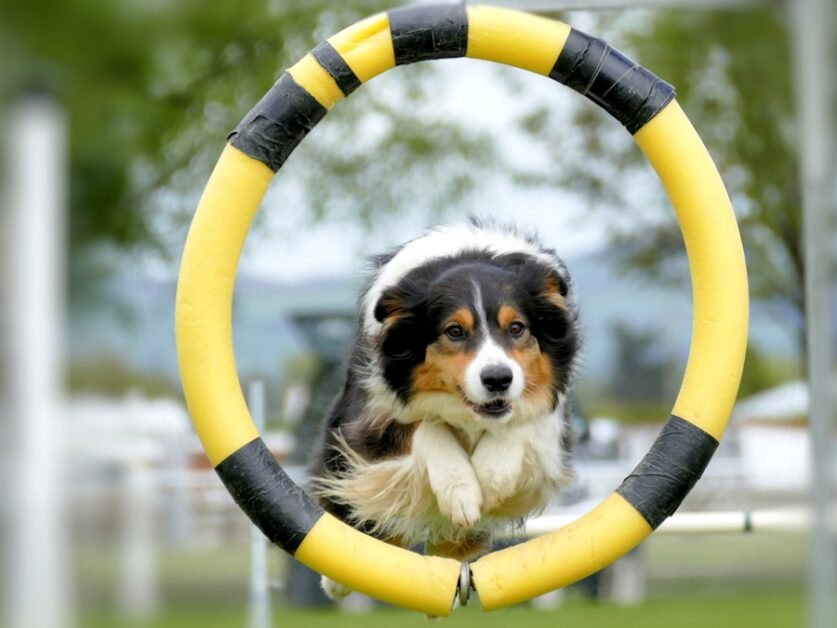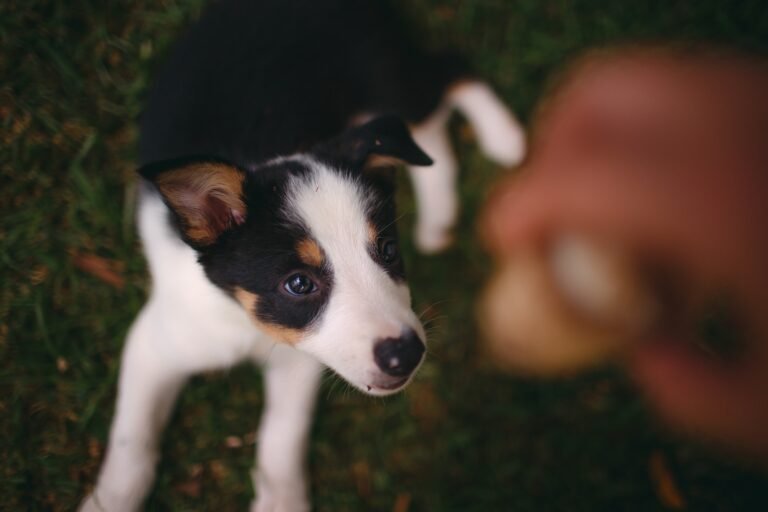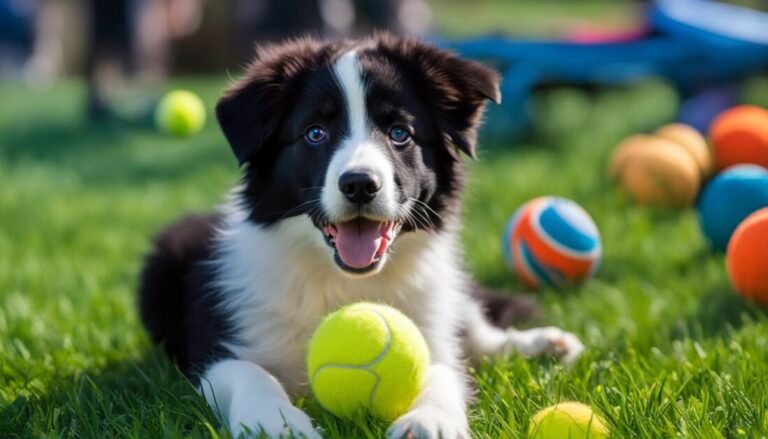From Pup to Pro: A Comprehensive Guide to Border Collie Training
The Border Collie is a highly intelligent and energetic breed that originated in the border region between England and Scotland. They were originally bred for herding livestock, particularly sheep, and their natural instincts and abilities make them excellent working dogs. Border Collies are known for their intense focus, agility, and ability to quickly learn and respond to commands.
In addition to their working abilities, Border Collies have also become popular as pets due to their loyal and affectionate nature. They are highly trainable and thrive on mental and physical stimulation. However, their intelligence and energy levels can also make them challenging to handle for inexperienced owners.
The Importance of Early Socialization for Border Collie Puppies
Socialization is the process of exposing a puppy to a wide variety of people, animals, environments, and experiences in order to help them develop into well-rounded and confident adults. It is crucial for all puppies, but especially for Border Collies who can be prone to anxiety and fearfulness if not properly socialized.
Early socialization helps puppies learn how to interact with other dogs and people, reduces the risk of aggression or fear-based behaviors, and helps them develop the skills they need to navigate the world around them. It also helps build their confidence and resilience, which is important for a breed like the Border Collie that may be exposed to new or challenging situations in their working or active lifestyle.
To socialize a Border Collie puppy, it is important to expose them to a wide variety of people, animals, and environments from a young age. This can include taking them on walks in different neighborhoods, introducing them to friendly dogs of all sizes and breeds, and exposing them to different sounds, sights, and smells. It is important to ensure that these experiences are positive and rewarding for the puppy by using treats, praise, and play as rewards.
Basic Obedience Training for Border Collies: Sit, Stay, Come, and More
Basic obedience training is essential for all dogs, including Border Collies. It helps establish a foundation of good behavior and communication between the dog and their owner. Basic commands such as sit, stay, come, and lie down are not only useful in everyday life but also important for the safety and well-being of the dog.
To teach a Border Collie basic commands, it is important to use positive reinforcement techniques. This involves rewarding the dog with treats, praise, or play when they perform the desired behavior. It is important to be consistent and patient during training sessions and to keep them short and focused to prevent the dog from becoming bored or frustrated.
To teach a Border Collie to sit, hold a treat above their head and slowly move it back towards their tail. As their head follows the treat, their bottom will naturally lower into a sitting position. As soon as their bottom touches the ground, say “sit” and give them the treat. Repeat this process several times until they start to associate the word “sit” with the action.
To teach a Border Collie to stay, start by having them sit in front of you. Hold your hand up in front of their face like a stop sign and say “stay.” Take a step back and wait a few seconds before returning to them and giving them a treat. Gradually increase the distance and duration of the stay as they become more comfortable with the command.
To teach a Border Collie to come when called, start by calling their name in an excited and happy tone. When they come towards you, reward them with treats, praise, and play. Gradually increase the distance between you and the dog when calling them to come.
Advanced Training Techniques for Border Collies: Agility, Herding, and More
Border Collies excel in advanced training activities such as agility and herding. These activities not only provide mental and physical stimulation for the dog but also allow them to use their natural instincts and abilities.
Agility training involves teaching a dog to navigate through a series of obstacles such as jumps, tunnels, and weave poles in a timed course. It requires the dog to be able to follow commands quickly and accurately, as well as have good coordination and balance. Border Collies are well-suited for agility training due to their intelligence, athleticism, and ability to focus.
To train a Border Collie in agility, it is important to start with basic obedience training and gradually introduce them to the different obstacles. Use positive reinforcement techniques to reward them for successfully completing each obstacle. Break the training down into small steps and gradually increase the difficulty as the dog becomes more confident and skilled.
Herding is another activity that Border Collies excel in due to their natural herding instincts. However, herding training should only be done under the guidance of an experienced trainer who can ensure the safety of both the dog and the livestock.
Positive Reinforcement vs. Punishment-Based Training Methods
Positive reinforcement is a training method that involves rewarding a dog for performing a desired behavior. This can be done using treats, praise, or play. Punishment-based training methods, on the other hand, involve using aversive techniques such as physical corrections or verbal reprimands to discourage unwanted behaviors.
Positive reinforcement is generally considered to be the preferred method for training Border Collies. This is because Border Collies are highly sensitive dogs who respond best to positive and reward-based methods. They thrive on praise and rewards and are eager to please their owners.
Punishment-based methods can be detrimental to Border Collies as they can lead to fear, anxiety, and aggression. These methods can also damage the trust and bond between the dog and their owner. It is important to remember that Border Collies are intelligent dogs who respond best to clear and consistent communication, rather than punishment.
Crate Training for Border Collies: Tips and Tricks
Crate training is a useful tool for house training, managing behavior, and providing a safe and comfortable space for a Border Collie. It can also help prevent destructive behaviors and separation anxiety.
To crate train a Border Collie, it is important to choose the right size crate that allows them to stand up, turn around, and lie down comfortably. Make the crate a positive and inviting space by placing soft bedding, toys, and treats inside. Start by introducing the crate gradually, allowing the dog to explore it at their own pace.
To encourage the dog to enter the crate, use treats or toys as rewards. Place the reward just inside the crate and allow the dog to go in and retrieve it. Gradually increase the amount of time the dog spends in the crate, starting with short periods and gradually building up to longer periods.
It is important to never use the crate as a form of punishment or confinement. The crate should always be associated with positive experiences and should never be used as a means of isolating or punishing the dog.
Leash Training for Border Collies: How to Teach Loose Leash Walking
Leash training is an important skill for all dogs, including Border Collies. It allows them to safely explore their environment while also ensuring their safety and the safety of others.
To teach a Border Collie to walk on a loose leash, start by using a properly fitted harness or collar and a standard leash. Begin by walking in a quiet and familiar area with minimal distractions. Hold the leash loosely and allow the dog to explore within a certain radius.
Whenever the dog starts to pull on the leash, stop walking and wait for them to return to your side. As soon as they do, reward them with treats, praise, or play. Repeat this process consistently, rewarding the dog for walking by your side and ignoring distractions.
Gradually increase the difficulty of the training by introducing more distractions and walking in busier areas. It is important to be patient and consistent during leash training, as it can take time for a Border Collie to learn to walk on a loose leash.
Dealing with Common Behavioral Issues in Border Collies: Separation Anxiety, Barking, and More
Border Collies are prone to certain behavioral issues, including separation anxiety, excessive barking, and herding behaviors. These issues can be challenging to deal with but can be managed with proper training and management techniques.
Separation anxiety is a common issue in Border Collies who are highly attached to their owners. To help manage separation anxiety, it is important to gradually desensitize the dog to being alone by leaving them alone for short periods and gradually increasing the duration. Providing them with interactive toys or puzzles can also help keep them mentally stimulated while alone.
Excessive barking is another common issue in Border Collies who are highly alert and vocal. To manage excessive barking, it is important to identify the triggers and address them appropriately. Providing the dog with mental and physical stimulation, as well as teaching them alternative behaviors such as “quiet” or “speak,” can also help reduce barking.
Herding behaviors such as nipping or chasing can be managed through training and redirection. Teaching the dog alternative behaviors such as “leave it” or “drop it” can help redirect their herding instincts in a more appropriate way.
Training Border Collies for Specific Jobs: Search and Rescue, Therapy, and More
Border Collies are highly versatile dogs who can be trained for a variety of jobs beyond herding. They excel in activities such as search and rescue, therapy work, obedience trials, and more.
Search and rescue training involves teaching a dog to locate missing persons or objects in various environments. This requires the dog to have a strong sense of smell, good problem-solving skills, and the ability to work independently. Border Collies are well-suited for search and rescue work due to their intelligence, agility, and drive to work.
Therapy work involves training a dog to provide comfort and support to individuals in hospitals, nursing homes, or other settings. This requires the dog to be calm, well-behaved, and comfortable around people of all ages and abilities. Border Collies can excel in therapy work due to their gentle and affectionate nature.
Obedience trials involve training a dog to perform a series of obedience exercises such as heeling, retrieving, and staying. These trials test the dog’s ability to follow commands quickly and accurately. Border Collies are highly trainable and excel in obedience trials due to their intelligence and focus.
Training Border Collies for Competition: Tips for Success in Agility and Obedience Trials
Competing in agility or obedience trials with a Border Collie requires dedication, consistency, and patience. These activities require the dog to perform a series of complex exercises with precision and speed.
To train a Border Collie for competition, it is important to start with basic obedience training and gradually introduce them to the specific exercises required in the trial. Break down each exercise into small steps and reward the dog for performing each step correctly.
Consistency is key when training for competition. Practice regularly and be consistent with your commands and expectations. Use positive reinforcement techniques to reward the dog for performing correctly and provide clear feedback when they make mistakes.
It is also important to keep training sessions fun and engaging for the dog. Use toys, treats, or play as rewards and incorporate games or challenges into the training routine. This will help keep the dog motivated and excited about training.
The Importance of Consistency and Patience in Border Collie Training
Training a Border Collie requires consistency, patience, and a deep understanding of the breed’s unique characteristics and needs. Border Collies are highly intelligent and energetic dogs who thrive on mental and physical stimulation. They are eager to please their owners and respond best to positive reinforcement training methods.
Whether training a Border Collie for basic obedience, advanced activities such as agility or herding, or specific jobs such as search and rescue or therapy work, it is important to provide clear and consistent communication, set realistic expectations, and be patient with the dog’s progress.
By understanding the breed’s history, characteristics, and training needs, owners can develop a strong bond with their Border Collie and help them reach their full potential as well-rounded and well-behaved dogs.








